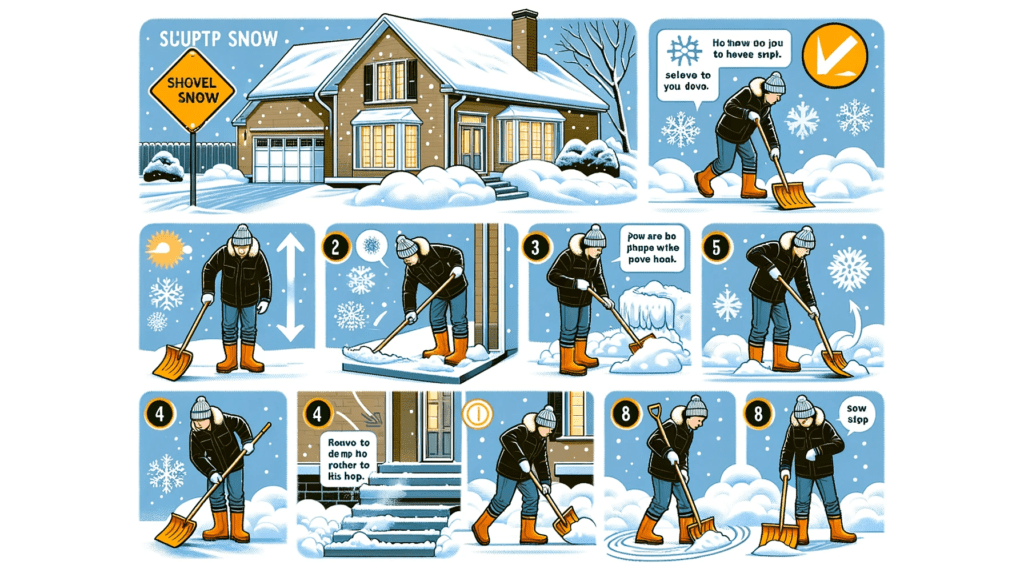How to shovel snow
Snowfall can be a beautiful sight, blanketing the world in a pristine white coat. But for homeowners, it can also mean hours of back-breaking labor with a shovel. Shoveling snow can be a daunting task, but with the right technique and preparation, it can be a much more manageable and even enjoyable experience.
This comprehensive guide will equip you with everything you need to know about how to shovel snow, from choosing the right equipment to working safely and efficiently.
Preparing for the Blizzard
Before the snow even falls, there are a few things you can do to prepare for the inevitable shoveling session.
Invest in the right tools
Shovel: A good-quality shovel is essential. Choose one with a lightweight, ergonomic handle and a blade made of durable material like poly or aluminum. Opt for a wider blade for pushing snow and a narrower one for heavier lifting.
Boots: Waterproof boots with good traction are essential for preventing slips and falls.
Warm clothing: Layer up in warm, waterproof clothing to stay dry and comfortable.
- Clear the area: Remove any obstacles from your sidewalks and driveway, such as toys, hoses, or lawn furniture, to make shoveling easier and prevent damage.
- Plan your attack: Decide on the order you will shovel, prioritizing walkways and driveways to avoid getting trapped by snow drifts.
Shoveling snow Techniques for the Win
Now that you’re prepared, let’s get down to the nitty-gritty of shoveling snow. Here are some key techniques to remember:
- Warm up: Before you start shoveling, do some light stretches to loosen up your muscles and prevent injury.
- Bend your knees, not your back: Lift with your legs, not your back, to avoid straining your muscles. Keep your back straight and your core engaged.
- Push, don’t lift: Whenever possible, push the snow instead of lifting it. This is less strenuous and more efficient.
- Take small bites: Don’t overload your shovel. Fill it only about halfway to avoid overexertion and injury.
- Change your grip: Alternate your hand positions on the shovel handle to prevent fatigue and strain.
- Pace yourself: Take breaks every 15-20 minutes to avoid exhaustion and dehydration. Stay hydrated by drinking plenty of water before, during, and after shoveling.
- Listen to your body: If you experience any pain, stop shoveling and rest. Pushing yourself too hard can lead to serious injuries.
Pro Tips for Snow Removal Champions
Here are some additional tips to make your snow shoveling experience even smoother.
- Spray the blade: Coat the shovel blade with a non-stick spray like silicone lubricant to prevent snow from sticking.
- Clear the roof: If the snow on your roof is more than 2 feet deep, hire a professional to remove it to avoid ice dams and potential roof damage.
- Melt the ice: Sprinkle rock salt or ice melt on walkways and driveways to prevent ice buildup and make shoveling easier.
- Be a good neighbor: Help elderly or disabled neighbors with their snow removal, especially if they live alone.
- Have fun! Put on some music, grab a hot cocoa, and make the most of the winter wonderland.
Staying Safe in the Snow
Shoveling snow can be a physically demanding task, so it’s important to prioritize safety. Here are some tips to keep in mind:
- Dress warmly: Wear layers of warm, waterproof clothing and gloves to protect yourself from the cold and wind.
- Stay hydrated: Drink plenty of water before, during, and after shoveling to avoid dehydration.
- Be aware of your surroundings: Watch out for falling ice from rooftops and power lines.
- Don’t shovel if you have a heart condition: Shoveling can be strenuous, so consult your doctor before shoveling if you have any health concerns.
- Take breaks: Don’t try to do too much at once. Take breaks every 15-20 minutes to rest and avoid overexertion.
- Know your limits: If you start to feel dizzy, lightheaded, or short of breath, stop shoveling immediately and seek help.
Conclusion
By following these tips, you can make snow shoveling a safe and efficient task, allowing you to enjoy the beauty of winter without breaking a sweat.






